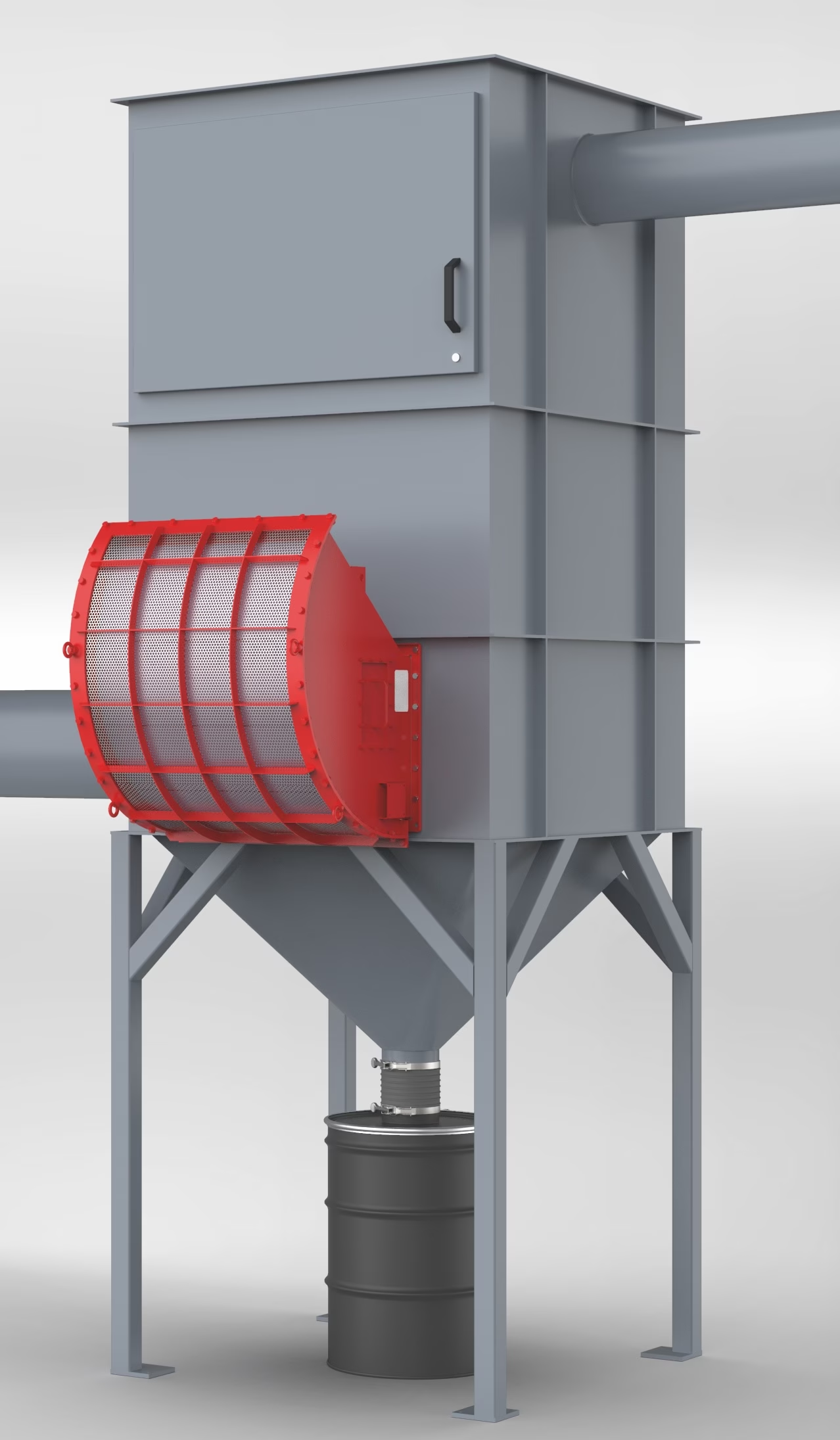How to be Aware of Factors That Reduce Flameless Venting Efficiency
An essential performance indicator for an explosion venting system is its venting efficiency, which describes how effectively it relieves pressure in a vessel.
Flameless venting systems, which include flame filters to make indoor venting achievable, require a more elaborate efficiency description due to several factors.
If this efficiency rating isn’t properly calculated for an application in which flameless vents are installed, they may not safely relieve the deflagration when called upon.

Essential Elements of Flameless Vent System Design
The performance of every flameless vent filter depends heavily on the unique characteristics of the burning dust cloud. Therefore, when designing a flameless venting system, an explosion protection provider should learn the following about the application and its handled dust:
Various particle sizes may clog the filter slower or faster.
Affects the rate of clogging as well as the size of aggregates that get blocked on the surface of the filter. For example, fibrous dusts may clog the filter in a different way versus melting dusts (such as sugar) or granular dusts.
250g/m3 in a certain volume will challenge a filter differently in comparison to 2000g/ m3. In the second case, the filter may clog faster and it can even fail due to the increase in pressure.
In a long vessel, where ignition may occur at the bottom and the flameless venting system is installed at the top, flame will push the maximum amount of dust from the entire volume through the filter.
Each flameless venting size has a maximum process equipment volume where dust is dispersed and can be successfully quenched. Above that limit, flame quenching is not guaranteed due to the high thermal load.

Q: Why Is Efficiency Reduced In Flameless Venting Devices?
Depending on the type of flame filter used, some of the unburnt dust particles will be retained by the filter to reduce the chance of re-ignition; however, it also has a negative effect in that the filter material may become clogged during the venting process.
When the flame filter becomes clogged by burnt and unburnt particles, its venting efficiency is reduced.
That’s why flameless venting performance cannot be described by one efficiency number but rather must be disclosed through a complex model that considers all of the factors of the process and its handled dust (see previous page).
For example, there is a possibility that a flameless venting device of a certain size performs very well under 500g/ m3 of cornstarch, showing an efficiency of 70 percent, but clogs very quickly under 500g/m3 of wood flour, showing an efficiency of just 40 percent or lower.

》 |
In all cases, a minor primary event was able to quickly develop into a major explosion involving an entire facility, leading to partial or entire collapse of reinforced concrete structures. |
Why It Matters
Purchasers of flameless venting systems must understand that within these devices is a hidden, complex problem of fluid mechanics, including fluid-particle flow, the transferring heat and the releasing of pressure, all within milliseconds.
The application of such a device to mitigate an explosion requires more information than traditional venting.
Users need to be aware of the complexity and ask the correct questions with the aim to define the real performance of these devices to ensure that when they are called upon, they work as intended.
⫷⫸
Fike’s solutions are backed by decades worth of internal test data from its Remote Test Site, where Fike explosion scientists and researchers provide essential data to the industry by studying flame propagation under real-world conditions.
That’s why the aforementioned variables of reliably calculating flameless venting efficiency have long been included in Fike’s system design.
And that’s why the Fike applications team will always incorporate these variables into the design of a flameless venting system, because we know how important these figures are to safety and because we have the data to support our protection systems within nearly any unique application.
Fike Remote Test Site
All of this is only possible due to Fike’s unique advantage of its Remote Test Site and its experts who’ve dedicated their careers to protecting people and property from the devastating effects of a dust explosion.

